Num. 1 - May 2015
Tutti gli articoli
Tutti gli articoli
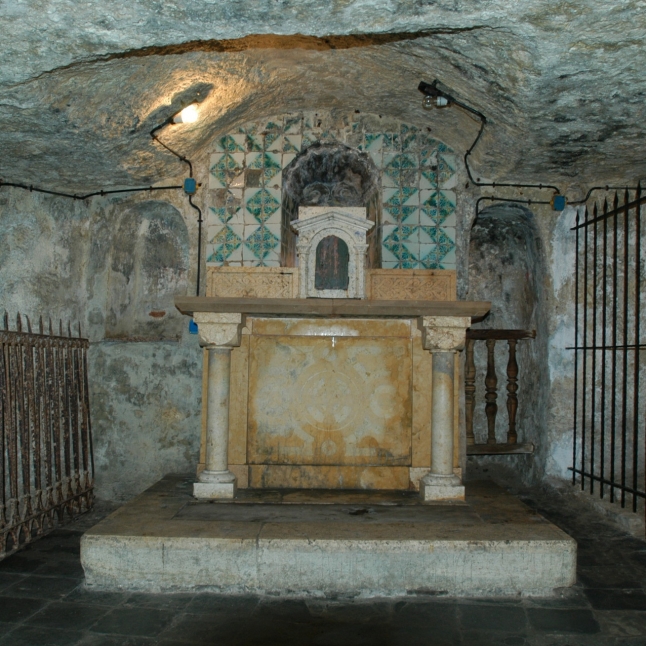
26 April 2015 Saint's crypt between history and tradition
Stampace District. Via Sant’Efisio, number 34. A small dark wooden door, where there is a Latin sentence: Carcer Sancti Ephysi M. Nine meters below the road, through a steep ladder, you can come in an hypogeum that is totally dug on the calcareous rock. A rectangular room, whose ceiling is supported by two pillars.

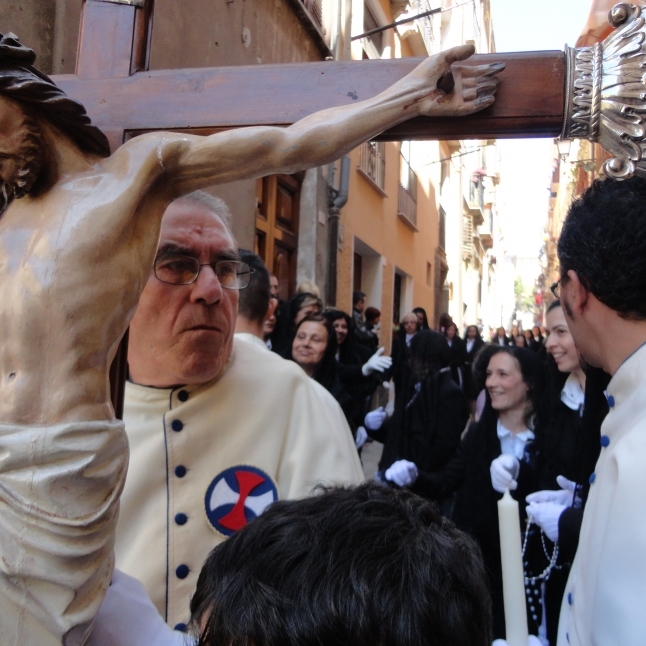
26 April 2015 Sant'Efisio 2015: the Mediterranean Saint presented at UNESCO
Less than ten days before the 359° fulfillment of the vow that links the City of Cagliari at one of the most heartfelt and enduring religious traditions, Efisio renews himself as man and Saint of gratitude, sharing and solidarity. This year edition, starting April 25, with the enthronement of the chariot until the expected and evocative return in Stampace May 4, will proudly vaunt a further step in the application of the "Big festival" to the UNESCO's List of Intangible Heritage: the Italian Commission has chosen to present it in Paris as a priority to preserve its richness over the island and national borders.

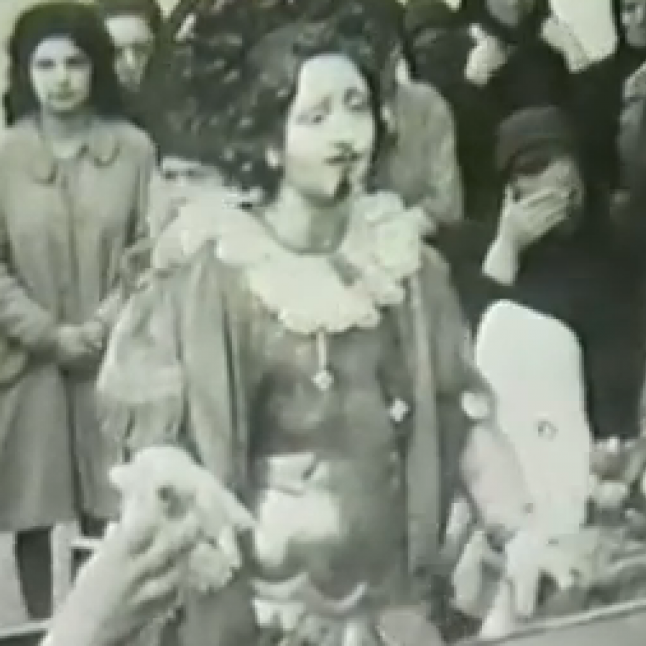
26 April 2015 1943, the Festival in sorrow
Dal 1657, anno in cui i cagliaritani sciolsero il voto fatto a Sant’Efiso affinché li liberasse dalla peste, la processione che porta il feretro del santo fino a Nora, non subì mai interruzioni, anche negli anni bui della guerra. Correva il 1943 e Cagliari stava subendo ripetuti bombardamenti da parte delle forze alleate anglo-americane, ma contro ogni rischio e pericolo, un gruppo di fedeli, anche quell’anno, mantenne fede alla promessa fatta e tra mille paure e difficoltà trasportò il santo fino a destinazione.
Quell’anomala processione prese il via in un clima surreale. La città era stata quasi interamente evacuata per via dei terribili bombardamenti del 26 e del 28 febbraio. In quel tragico maggio del ’43 era presidiata militarmente, ovunque sorgevano postazioni militari e batterie antiaeree per paura d’incursioni nemiche. Interi quartieri erano ridotti a un cumulo di macerie, palazzi sventrati e calcinacci sparsi ovunque, nei vicoli, nelle piazze e nelle strade.
In questo tragico scenario la statua del Santo fu rinvenuta incredibilmente integra, (col solo naso leggermente scheggiato e un dito rotto), caduta a terra in seguito agli scoppi delle bombe che fecero tremare le mura della nicchia dove era riposta.

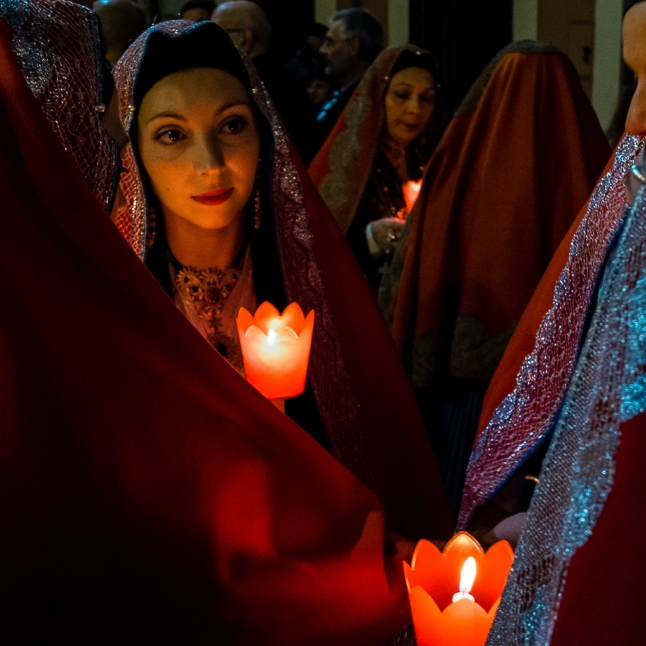
26 April 2015 A path of faith and culture
The celebration of Saint Efisio is represented by such a long procession. It is the longest procession in Italy and it is characterized by a path of 65 km done in four days. Furthermore, for its cultural, tourist and spiritual value, it is the most important in the Mediterranean.
On first May, at midday, the bier of Saint Efisio leaves from the Church of Stampace, on the chariot of gala, convoyed by the Arciconfraternity and by many devoted, following a clear itinerary in these streets of Cagliari: Via Azuni, Piazza Yenne, Corso Vittorio Emanuele, Via Sassari, Piazza del Carmine, Via Crispi, Via G.M. Angioy, Via Mameli, Largo Carlo Felice. The top of the procession is represented by the arrival of the chariot to Via Roma, from the side of the town hall, where it is greeted by the sound of the launeddas and by the songs. After having crossed Via Roma and entered in Via Sassari, the procession passes through Viale La Playa and leaves the town.
Then the bier stops in the village of fishermen for a homage and comes to the Church of Giorgino for the usual change of the clothes. This step is basic. Here the Saint is vested through a suit that is plainest and less sumptuous than the previous. After having changed the clothes, the bier is transfered in another chariot.

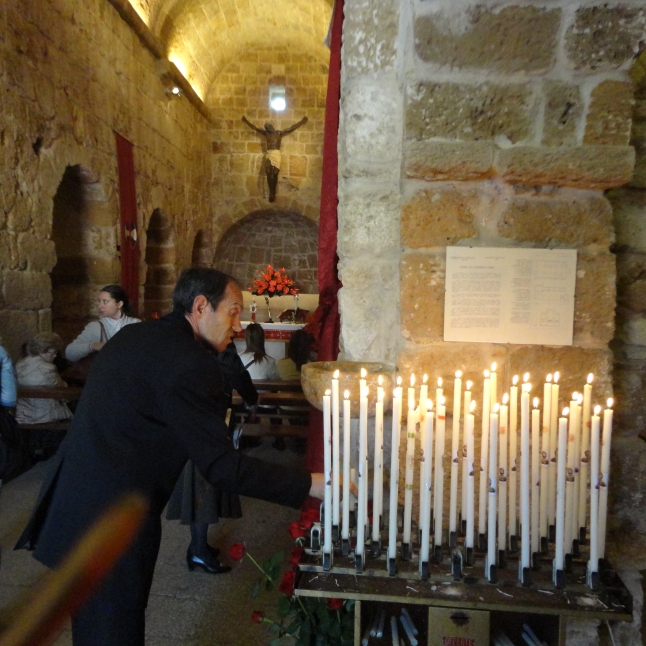
26 April 2015 The plague of 1656 and a vow that is repeated for over 350 years
For understanding the meaning that is both religious and historic and that concerns every anniversary which is repeated on time, it is necessary to begin from the main reason that caused everything. About the veneration of Saint Efisio, you need to make a jump of more than 350 years and to come back to 1656.
In those years there is the spark which created this deep adoration. During the time, faith and tradition have been melting and the mystery of the rite has been building and has been becoming richest of new details for being transmitted over the years. They were hard years those between 1652 and 1656: an invasion of locusts and the terrible plague. That ferocious, sly and horrible disease came also in Sardinia, probably carried by a ship. In a short time, there was a big spread everywhere, propagating death and terror.
Every day, in the Island, there were hundreds of dead people. Indeed, Sardinian population have decimated in the course of a few years. The plague, propagated in the North of Sardinia came to Cagliari in 1655 but the worst arrived next year. 1656 was a terrible year for Cagliari. In the first months of that year, the city was considered contaminated. People who had the disease were many; there were dozens and dozens of dead people. The situation became dramatic in a short time. In that epoch, Sardinia, that was poor and underdeveloped, could not refer to the science and the only choice concerned raising own eyes towards the sky and praying in order that the terrible plague finished. The prayers and the supplications of the islanders, and then of the citizens of Cagliari, focused the attention on Saint Efisio.

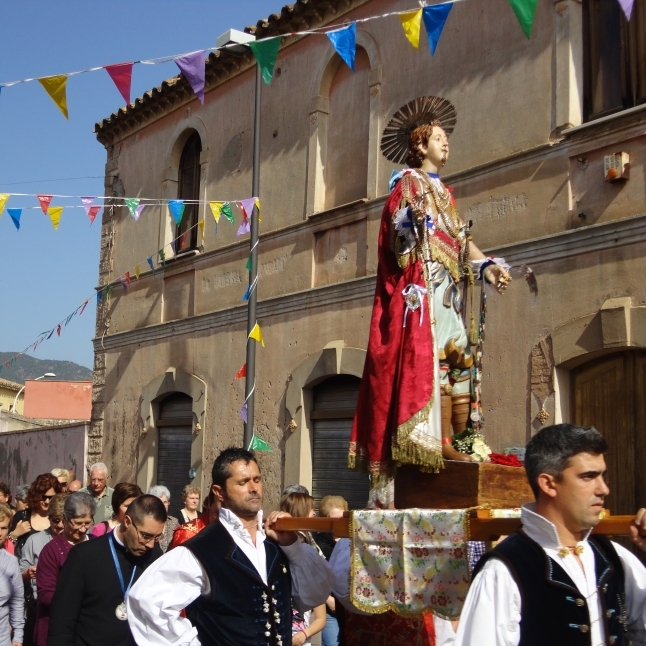
26 April 2015 Saint Efisio
For understanding the meaning that is both religious and historic and that concerns every anniversary which is repeated on time, it is necessary to begin from the main reason that caused everything. About the veneration of Saint Efisio, you need to make a jump of more than 350 years and to come back to 1656.

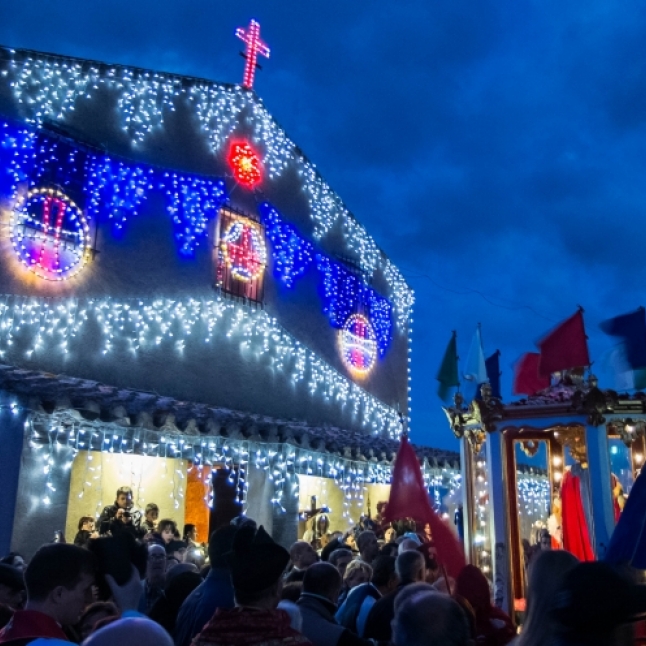
25 April 2015 A church behind the beach
This church on the seaside was built in the second half of the eleventh century, in the exact place where, according to the tradition, was martyred Saint Efisio. A small building, inside which is an atmosphere of strong spirituality, emphasized by the low sunlight that penetrates through the small lateral single lancet.
Inside the church stands the bright color of the sandstone; there is an almost total lack of frills, everywhere dominates simplicity. The three small naves, divided by small arches stand on simple pillars. Everything looks white, essential.

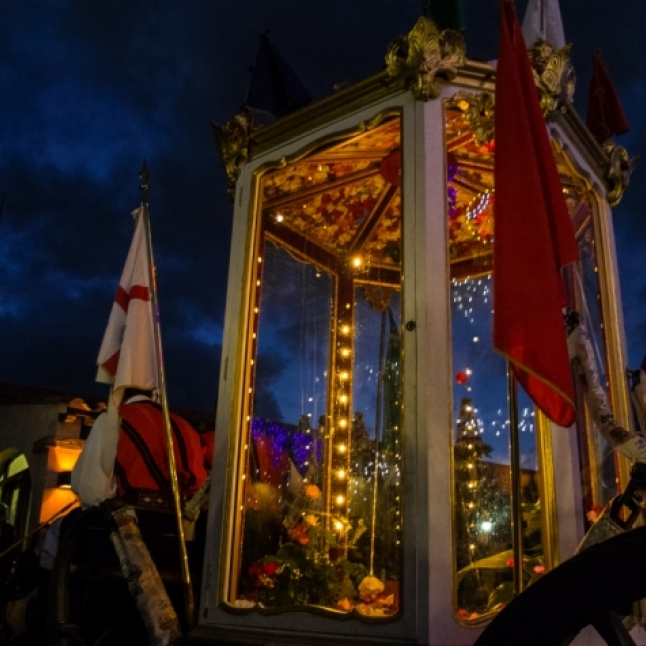
25 April 2015 The "goccius" of the glorious martyr Saint Efis
In troubled and turbulent years, in which the Western Roman Empire was reeling under the blows of the barbarian invasions and was racked in power struggles, Christian monotheism was gaining followers and, despite persecution and cruelty to which converts were often subjected, following the moods and the taste for the spectacle of the Roman circus of the years after its dissolution.
And so, as happened to Saul of Tarsus, better known as Paul, persecutor of Christians, on the road to Damascus, even Efisio, put in charge of a Roman militia by Diocletian, ruthless enemy of Christians, more for boredom than conviction of their dangerousness, having fought and won the people of Barbagia (the center-east region of Sardinia), arrived in Cagliari, publicly denounces his conversion.
The narration of the priest Mauro (or Marco) in Passio Sancti Ephysii does not say much, except, on the model of martyrdom of saints, the last moments and miraculous reactions at the torture by Efisio which he attended as an eyewitness.
The cross marked on the right hand, as we see today in the statue - although there is that "sballìada" wrong, who reported it on the left - testifies a convinced change, declared to the saint's mother and the emperor, in short, a full-blown "outing".
Arrested and tried, he was sentenced to beheading. So to Nora, in 303 (or 313?), the sentence was carried out. Before he died, as he tells the priest Mauro to this prodigy, he addressed a prayer to God, recommending to have a special regard for the city of Cagliari and "And how many of them will suffer from some disease, if they come to the place where my body will be buried, to recover health or, otherwise, will close by the waves of the sea or be oppressed by barbarian peoples or will be ruined by famine or plagues, after praying me, your servant, be saved for You, Lord Jesus Christ, God Son, Light from Light, and are freed from their suffering."

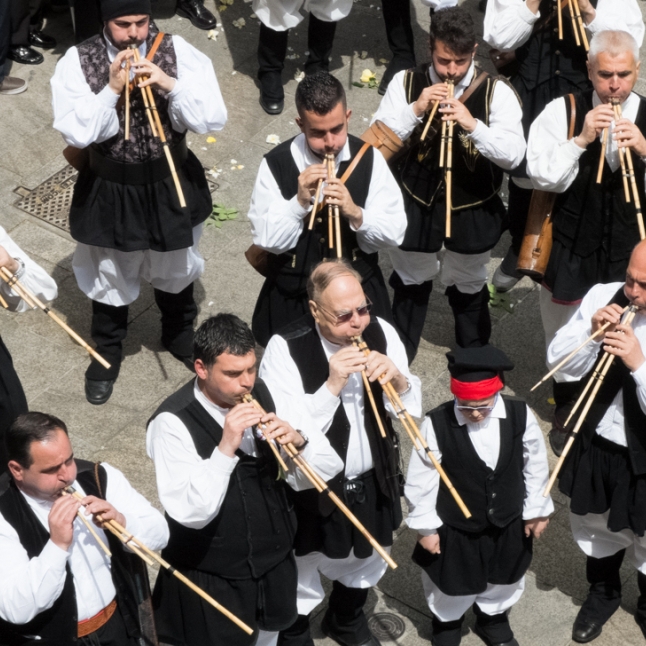
25 April 2015 The launeddas: the Sardinian instrument par excellence
About the launeddas people wrote a lot, but certainty concerns the discovery of a Sardinian bronze statuette, in the territory of Ittiri, near Sassari. This bronze statuette comes from Eighth-Ninth Century B.C. and represents a hermaphroditic figure who is seated and plays an instrument similar to the launeddas. This proves that in that period there have already been a phonic device which belonged to this kind of musical instruments. The launeddas, called "triple mass clarinet", were fundamental means for accompanying the days of people who had a country life.
The framework is made up by three calamus or tubes of reed: the first is called "Tumbu" and gives the main note to the instrument. "Sa Mancosa Manna" is linked to this tube through a pitchy cord and it has the role of accompaniment. It has four digital holes, "is crais" and another hole, called "arrefinu", that blends in a melody with the tonic of "su Tumbu". The union of these two calamus creates "sa loba" and both are supported by the left hand. The third calamus is called "sa Mancosedda" and it is the smallest reed. It has four digital holes and another very important, that has the role of range, in a melody with the tonic of "su Tumbu". "Sa Mancosedda" has the function of soloist and for it you must use the right hand.

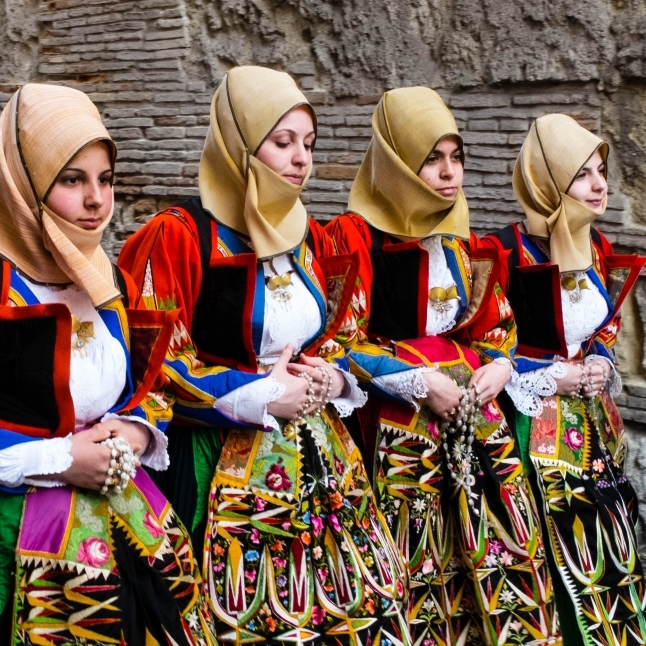
25 April 2015 Sant'Efisio, a beauty parade
Folk groups from all over the island on the feast of Saint Efisio prepare this important event with the excitement of those who are about to join the most beautiful ceremony, the most heartfelt religious liturgy that takes place for almost 400 years First May in Cagliari. Accompanied by the sound of launeddas and the typical songs, about 5500 people in traditional costume parade on a carpet of flower petals through the streets of the city center. Certainly an unusual catwalk for a parade of high fashion, but at Sant'Efisio, the public not only assists in the procession of the Holy Martyr patron of Cagliari and Sardinia. Indeed, do not get tired to admire and appreciate the sumptuous clothing worn by men, women and children, loads of jewelry, ribbons and bows on cloth by the bright colors, decorated with lace and embroidery "haut de gamme", that is of high quality, as they say without doubt in Paris.
